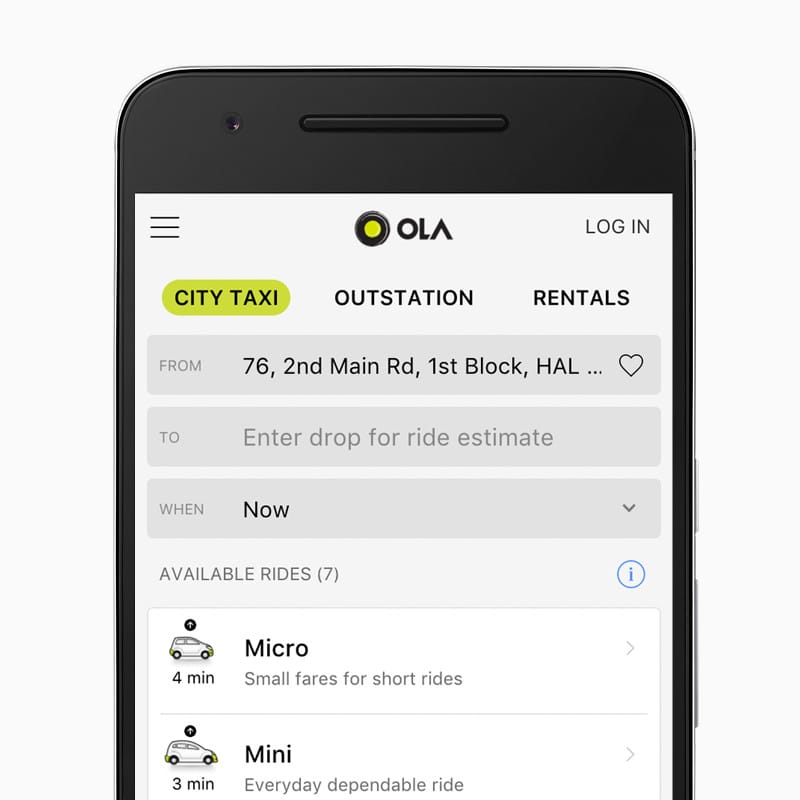
Ola is the leading cab aggregator in India, with a relentless mission to drive mobility for a billion Indians. The company reaches over 100 Indian cities with a network of about 600K driver-partners. As one of India’s most highly valued startups, Ola completes more than a million daily rides, fighting for the lion’s share of the country’s estimated 300 million daily taxi trips.
- 68% increase in mobile traffic in Tier 2 and 3 cities
- In Tier 2 cities conversion rates are same as native app. In Tier 3 cities, conversion rates are 30% higher with the PWA.
- PWA application size is 200KB, which is 300x smaller than downloading an Android app and more than 500x smaller than the iOS app
- 20% of users who book in their PWA had prev. uninstalled their app
Challenges
Tier 2 and Tier 3 cities (cities with populations of 20,000 to 99,000) pose unique challenges and opportunities for Ola. Demand for sustainable, reliable transport services is growing rapidly and is eagerly anticipated in these areas. People in these cities often deal with intermittent cellular connectivity and have low-end smartphones with low memory and slow processors. These users are less apt to download and store native apps on their smartphones because native apps require high data usage and take up a lot of space —the Ola Android app is a 60MB download and the iOS app is 100M. It was clear that Ola needed a different way to reach these users.
The mobile web presented a perfect solution. It offers easy discovery and low friction—users just click a link instead of downloading an app. Other advantages include push notifications, and the “Add to Home screen“ user prompt. As Dipika Kapadia, Ola’s head of consumer web products notes, “Apps have many advantages but must be developed for different operating systems, while a single site is good for any browser.”
Solution
Ola built their mobile website as a Progressive Web App (PWA). Using just 200KB of data to install, the PWA is at least 300X smaller than downloading the Android app and 500X smaller than downloading their iOS app. Repeat visits use as little as 10KB. This low data consumption translates into a 3.4-second first visit and less than a second for repeat visits on 2G and 3G networks—an ideal solution for millions of Indians.
Ola also noticed that 20% of users who book using their PWA had previously uninstalled their app. By reducing the amount of storage space needed, the PWA allowed them to effectively re-engage with their previous app users.
Having a fast, engaging mobile website means we’re no longer turning away potential users who don’t want to use data or space to download an app.
Dipika Kapadia, head of consumer web & corporate products, Ola
The PWA is helping Ola reach a broader set of users in new cities. They’ve seen mobile traffic from Tier 2 and Tier 3 cities grow by 68%. Since launch, conversion rates on the PWA have been the same as their native app in Tier 2 cities, and for Tier 3 cities, conversion rates are 30% higher on the PWA.
A future without apps?
Well, not exactly. For Ola, having both a native app and a PWA just makes sense. By skipping the requirement that users install an app, Ola believes their PWA is tailor-made for the low-end devices. Users can now use either depending on their location and bandwidth.
There’s no need to choose between the web and the app. Today, we believe Ola is set for its next stage of growth. We intend to balance the two and have both strategies in play.
Ankit Bhati, Co-Founder & CTO, Ola
